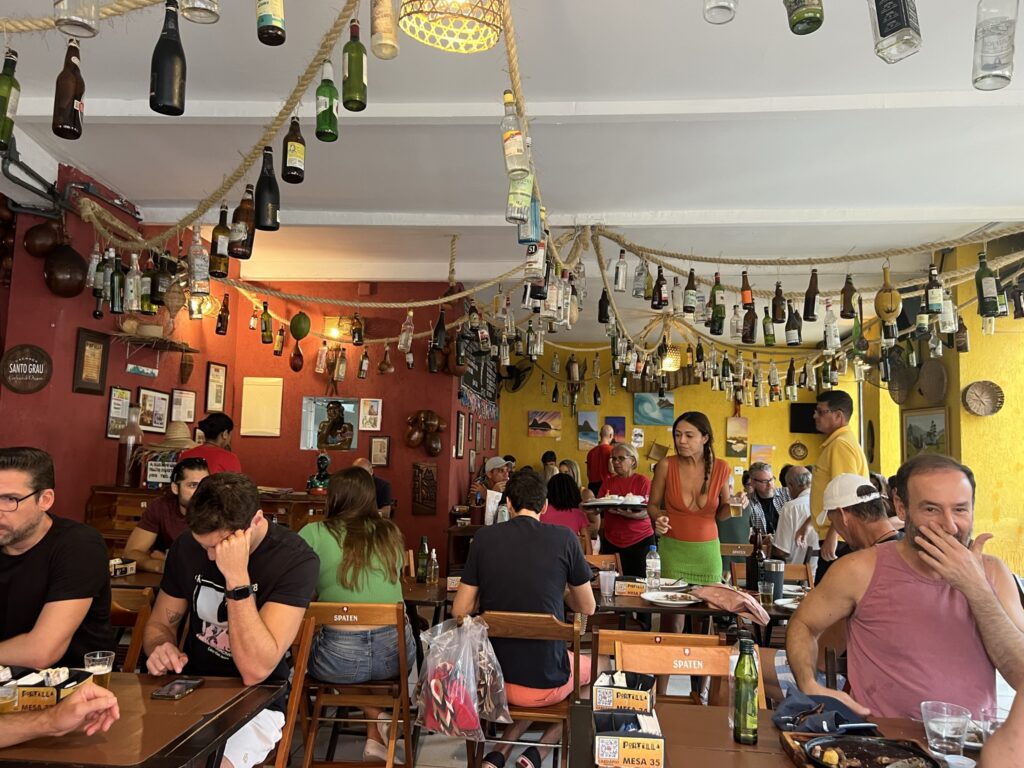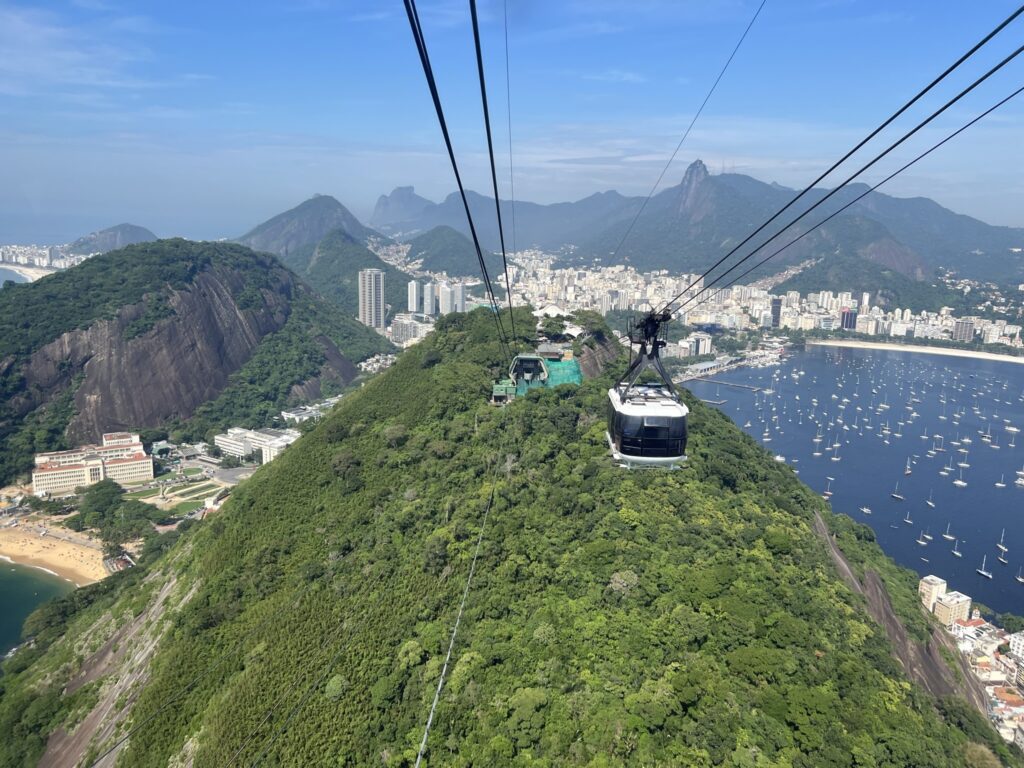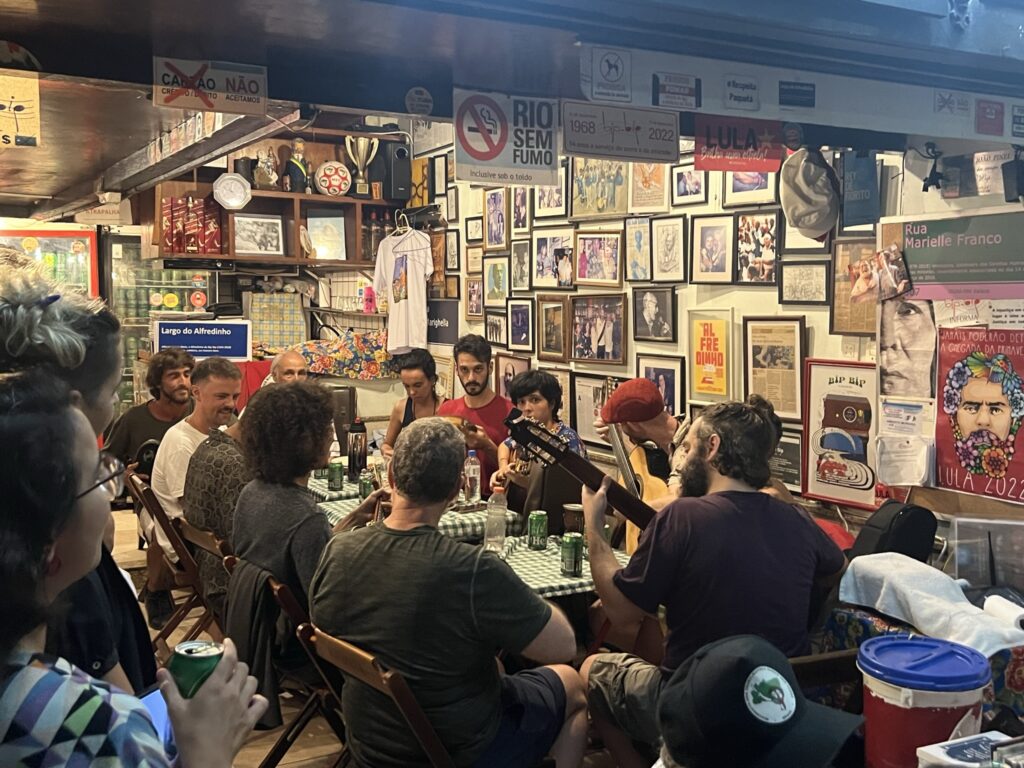Rio de Janeiro is a large metropolitan city nestled between mountains containing Atlantic jungles and world famous beaches. We arrived during a heat wave and were looking forward to experiencing the diverse activities.
Best Thing I Ate This Week
Feijoada Completa from Portella Bar e Restaurante
Santa Teresa is a neighborhood in Rio de Janeiro with cobblestone streets, a tram car, and colorful murals. When walking through, Portella Bar e Restaurant stuck out with a packed dining room, live music, and bottles strung from the ceiling. A table had just opened up, and we were lucky to grab a spot for lunch.

Highlighted on their menu for sharing with a group was the feijoada completa, a famous Brazilian stew. The rich black bean stew contained amazing smoked meats. It was served with rice, oranges, cabbage, pork rinds, and pork which was plenty for a group of four.


An Interesting Fact I Learned
Colonial history of Rio de Janerio and Portugal
Admittedly, I did not know much about the history of Brazil before arriving and was looking forward to our Free Walker Tour of downtown Rio to learn more. Our guide, Elaine, spent her whole life in Rio de Janeiro. She was eager to share more about its important role in the history of Brazil.

The tour stopped near Igreja de Nossa Senhora do Monte do Carmo da Antiga Se (Church of Our Lady of Mount Carmel of the Ancient Sea) to cover the city’s colonial history. The church holds a special significance because it was the only church to host a royal funeral, coronations, and royal weddings in the Americas.
In January 1502, the Portuguese settlers who arrived initially thought the Guanabara Bay was a river flowing through the land. This led to the mistaken name of Rio de Janeiro (river of January). In the 1600s, the city grew to prominence when gold was discovered in Minas Gerais. Then, the colonial administration was moved to Rio de Janeiro from Salvador due to its prominent ports.

During the Napoleonic Wars, the monarchy of Portugal fled Portugal and brought 50,000 people to Rio de Janeiro. It became the first European capital outside of Europe. As a result, a significant investment was made into the city’s infrastructure to accommodate the influx of people. When the royal family returned to Portugal after the war, Prince Pedro decided to stay because he enjoyed his life there and the people he met. In 1822, he asked his family for Brazil’s independent and was granted permission to do so by his father.
My Travel Tip of the Week
How to visit Pão de Açúcar
When visiting Rio de Janeiro, Pão de Açúcar (Sugarloaf Mountain) is a top attraction because of its incredible views of Copacabana Beach, Guanabara Bay, the skyline, and Christo Redentor. In order to make the most of your visit to the viewpoint, there are a few steps to follow:

- Buy your ticket in advance from the Parque Bondinho website. This will allow you to skip the purchasing line at the cable car station.
- Check the weather and visibility forecast in advance. In addition, you can look up at the peaks and if you can see them clearly the visibility should be good at the top.
- Arrive to the cable car right at the 8 am opening. The large tour groups will not yet have arrived, giving you lots of space to explore.
- Explore the small paths on Pão de Açúcar and Morro da Urca. After enjoying the most famous view points, explore the walkways and paths at the top of each mountain.

My Additional Anecdote This Week
Local football (soccer) and samba bars in Copacabana
Copacabana is known for its beautiful sand beaches with views of Pão de Açúcar rising above the Atlantic Ocean. Once you have enjoyed a day relaxing in the sun, there is still much fun to be had in the local bars that line the streets of the lively neighborhood in the evening.

As you walk along the streets, it won’t take long to hear the beat of a drum. Follow the noise and, soon, you will come across a bar with a group of musicians surrounded by people singing in Portuguese. They will most likely be playing samba music. Even if you don’t know the language, it is fun to dance along and join in the Brazilian celebration.

Additionally, Brazilians love football (soccer) and in Rio de Janeiro their most popular teams include Botafogo, Falmengo, Fluminese, Vasco. Cariocas (people from Rio) may not agree on their favorite local club, but unite around the national team. During our time visiting the city, all of these teams had games, and the bars of Copacabana filled with passionate fans cheering in victory or yelling in defeat. It was fun to join in and cheer on whatever team the crowd was supporting.
You can read about some other ways to join in the local culture of Rio de Janeiro here.

